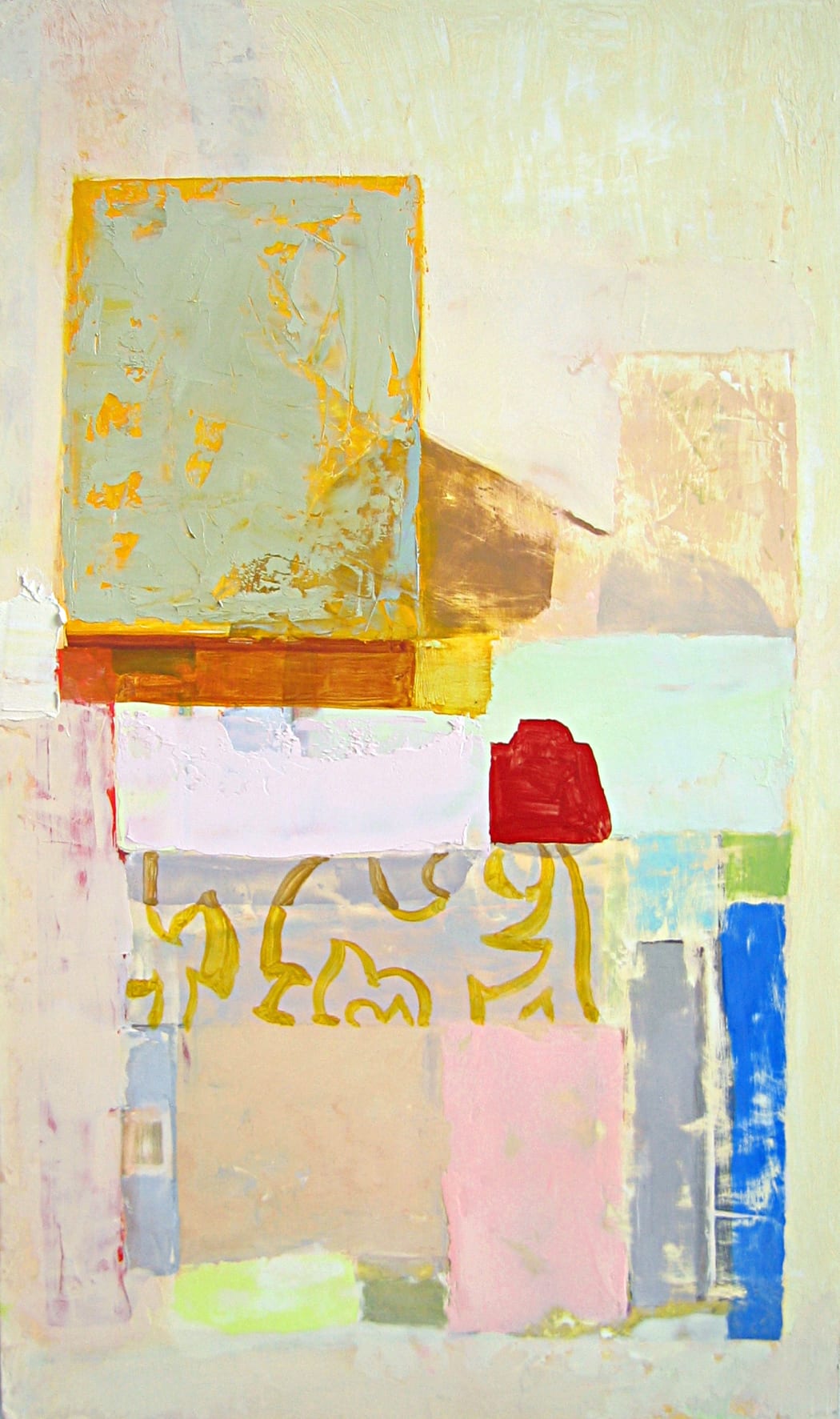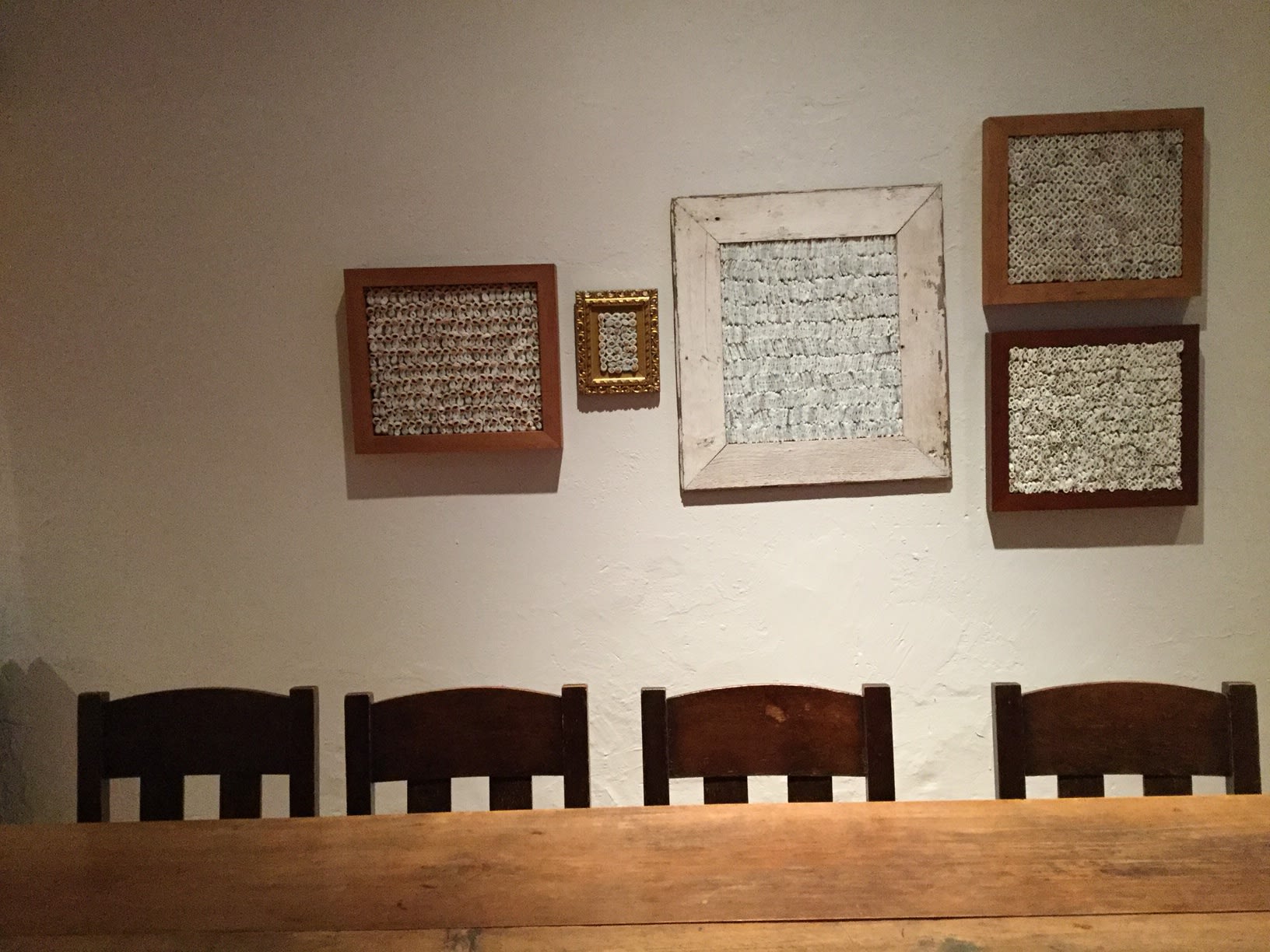
Every week, we'll be sitting down with one of our gallery artists to discuss their work, process, inspiration, and stories. This week we're speaking with Sydney Licht.

Sydney Licht, "Untitled"
Sydney Licht's work is often about subversion - the subversion of the traditional still life, the subversion of everyday objects into subjects worth studying, the subversion of what's considered disposable. Her still life paintings and her sculptures transform the mundane and the trappings of materialism into abstractions, something to be considered anew. As her art is inspired by her surroundings, she lives surrounded by her art in a loft in the TriBeCa neighborhood of New York City. Her living space is bookended by her studio taking advantage of the natural light from the east, and a space showcasing her completed works to the west. We sit down in her kitchen to discuss how self-imposed limitations expanded Licht's range, the relationships she explores between the man-made and the organic, and how her work is entangled with consumerism.

What are some of your earliest memories relating to art?
My first memory is from second grade, so I had to have been about seven, and I was in school flipping through the Encyclopedia Britannica, and I saw a color reproduction of a Rembrandt painting called "Woman With a Pink." I think it's now at the Met. It was just a portrait of a young woman holding a pink flower, but I was mesmerized. I was struck by the way Rembrandt captured the light on this woman's face. I think my interest in capturing light and how it falls on form definitely comes from that first impression he made on me.

When did you become an artist yourself?
I was already in college by the time I realized that painting was something I couldn't not do. As a child I was encouraged to express myself, but I was definitely not encouraged to have a career as an artist, so I was about twenty before I decided that there was nothing else on the planet I could really see myself doing.

Both your painting and your sculpture explores everyday objects, whether it's in your still lives or the sculpture that's created with the objects themselves. Was that always what you were drawn to or was there an evolution towards that?
There was definitely an evolution. In the eighties I was painting these big organic abstractions and they would take forever to finish, and I realized one day that I was using color very arbitrarily with no logic or rhyme or reason. I didn't know why I was picking certain colors and not other colors, and I was getting very frustrated by that. So I gave myself an assignment where I could only work with a small, defined color palette. I was working on a painting at the time and I liked the composition, so I used still life objects to replicate the composition and decided on the colors I'd be working with from those objects. This assignment got me to start painting things around me out of necessity, but then I found that there was so much in the very humblest of forms that I didn't need to go looking for some big organic abstraction. I've never run out of interest or questions since then. I'm still learning all about color through observation in my painting. Then it was the painting that led me to the sculpture because looking at these objects so intently made me want to try and manipulate them physically.

Your paintings are very closely cropped and usually have the perspective of looking at the arrangement from below. To me, it feels like they're from the point of view of a child and like you're discovering these objects for the first time, and that elevates the importance of these kind of mundane things. Was that your intention with how you were arranging your paintings, or what other choices were made with figuring out the composition?
Well, you're very perceptive because that is exactly why I choose to look at them from that perspective. It allows me to see them in a new way. We all pass by things every day and don't think about them at all, but when you see them from a different point of view it's easier to see the abstracted form. It's easier to take away the name and definition of the object in your mind and just encounter what you're experiencing in the moment. That way I can focus on painting issues and not solely trying to translate the object into this two dimensional form, which I'm really not that interested in. I'm much more interested in the relationship of the forms, the colors, the space. They're still lives, yes, but I think of them more as abstractions.

Are you still giving yourself that assignment of limiting the color palette?
I am.

What are the challenges with that and how do you find it affecting your work?
I think that color is analogous to music, so when you're forced to restrict your means, it really expands the way you're using what you have. The restricted color helps to make the painting more cohesive and it focuses on these harmonies. Then there can be this dissidence if you add a new color into the palette, which I'll sometimes do. Let's say that I'm working with a fluorescent yellow bag, I'll add a fluorescent yellow to the five or six colors that are on my palette. That'll create something exciting. There's a lot to experiment with.
Do you consider your work political at all? You've cited consumerism and the disposal of objects as inspiration for you. Do you think your pieces have a message relating to that?
I definitely think I'm interested in how we live today, and if you want to call that overtly political, then sure. But I don't start with a political theme. These are things I notice, these are things I care about, these are things I'm questioning. I want to be a part of the time and place that I live in. I'm a woman in the 21st century and I'm observing the things around me and how we live, and that just naturally gets reflected in the work.

Could you talk a little bit more about your transition into sculpture?
I've often painted things that are man-made combined with things that are natural. There was this period where I was painting images of packing peanuts because I was really attracted to the shapes. Whoever makes these styrofoam peanuts has myriad choices for what shape they are but I noticed that often they're letter forms, or number forms, and it was very curious to me. Around the same time I was also painting a lot of cherries, and so I'd eat a lot of cherries. I was studying these packing peanuts, and these cherries, and then the cherry pits, and I was struck by the irony of how a cherry comes from a tree, which comes from the ground, and the pit is the leftover of what we eat, while the styrofoam packing peanut, something that ends up in the ground in landfills at the end of its life cycle, is the leftover of what we buy. So, these are two things that are leftovers, and they had to go together, which is the concept behind the sculptures combining them [such as "M's and W's" in our current exhibition, "Space, Light, and Disorder."

The box sculptures started because of my interest in packaging. Rather than throwing boxes away, I started collecting them, and it was a natural impulse for me to start stacking them. I'm often interested in pressure in my work, things that either have pressure from the top down or from the sides at the edges of the picture plane, so it was a natural transition. Those sculptures also have this sense of impermanence; I don't do anything to attach the boxes to each other, they're not glued together or anything. If they're pushed, they'll collapse.

I love those sculptures. I'm a total sucker for packaging and even though I'm fully aware of it, I'll catch myself spending more money on the things that have the prettier packaging. It's interesting seeing that in an artistic light instead of it feeling purely materialistic.
I'm a sucker for it too! I think the role packaging plays in our lives is so fascinating. It's taking the place of something in our culture. A hundred years ago, people would spend hours with the ritual of eating, you know, setting the table and making it all grand and beautiful and this visual feast. But we don't have time for that anymore. We still want that visual abundance in our lives, but things are so fast-paced now that the design of the packaging is the only place for it. It's also about desire. The packaging is the promise of what might be inside. I think that aspect is very related to painting.
Explore more of Sydney Licht's work here.
